Wrinkle Treatment in Johannesburg
Search and Compare the Best Clinics and Doctors at the Lowest Prices for Wrinkle Treatment in Johannesburg

Find the best clinics for Wrinkle Treatment in Johannesburg
With Medijump you can browse 2 facilities offering Wrinkle Treatment procedures in Johannesburg. The cheapest price available is $114 in Cape Town
Wrinkle Treatment in South Africa
Price: $ 114
Wrinkle Treatment in Cape Town
Price: $ 114
Wrinkle Treatment in Johannesburg
Price: $ 142
Thailand offers the best prices Worldwide
Price: $ 53
From 72 verified reviews
Charlotte Sorour, 13 March 2020
Parking is a huge problem.On a positive note it is a great hospital with great specialists and doctor's hence why it is so busy. Well worth driving around a bit looking for parking knowing your loved one's are in good hands. My mind at ease. My husband is well looked after. Thank you Linksfield staff :)
From 38 verified reviews
Nompumelelo Madliwa, 19 April 2020
I had such a wonderful experience there with Dr Thomas, I had a skin drafting done it was such a smooth process I am healing very well and had a great stay there, Thank you so much
- Home
- South Africa
- Johannesburg
Compare Before & After Photos of _procedure_photos.phpWrinkle Treatment
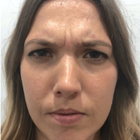
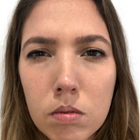
Front view
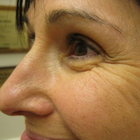

Half-side view
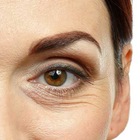
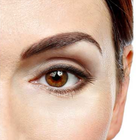
Front view


Half-side view

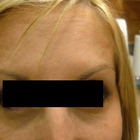
Front view

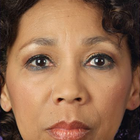
Front view
WHY US?
At Medijump, we're making medical easy. You can search, compare, discuss, and book your medical all in one place. We open the door to the best medical providers worldwide, saving you time and energy along the way, and it's all for FREE, no hidden fees, and no price markups guaranteed. So what are you waiting for?

Free

Best Price

Widest Selection

Risk-Free
What you need to know about Wrinkle Treatment in Johannesburg
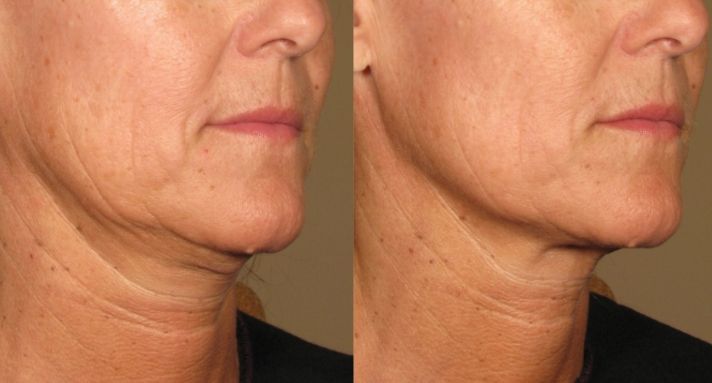
Ultherapy is an FDA-approved non-invasive skin tightening treatment. Known as the non-surgical alternative to facelift surgery, Ultherapy uses a focused ultrasound beam to boost collagen production in the deeper layers of your skin. Collagen is a natural protein that comes in numerous different types. It gives firmness and tightness to your skin. As we grow old, collagen loses its strength and firmness and shows laxity. This procedure gives collagen its strength back.
While a facelift offers more obvious results, it leaves scars and has other associated risks such as nerve damage and clot formation. Ultherapy, on the other hand, requires plenty of time to make its effects visible. Also, more sessions are needed to maintain its effects. It strengthens the loose skin of your face and neck and nullifies the effects of ageing on your face. It has the advantage that there is no downtime for it. You can apply makeup immediately after the procedure. This procedure needs to be repeated every six months or a year.
Ultherapy tightens and strengthens your loose skin without giving incisions and stitches. Instead, a focused ultrasound beam is used to lift your skin. Before going through the therapy, you have a lower eyebrow line, droopy lower eyelid, flat saggy cheeks, and loose skin of the neck. After Ultherapy, your skin looks glowing and rejuvenated, cheeks look healthy and plumped, and eyelids look lifted.
What does a Wrinkle Treatment Procedure Involve?
The procedure begins with cleaning your skin with an alcohol swab to kill any germs present at the spot. A specialized gel is applied to your skin. The focused ultrasound beam is used to produce thermal effects in the deeper layers of skin. The device is pressed firmly on to the skin of areas that needs strengthening. This induces new collagen production in these layers and gives firmness to the previous one. Ultrasound rays are applied over the areas where skin tightening is intended, such as the face and the neck. The time of procedure varies with the areas which are to be treated. It produces thermal effects which can be the cause of discomfort during the process. It lasts for a small period of time when the energy is being delivered into skin layers. This slight discomfort is a sign that the collagen-boosting process has been started.
How Long Should I Stay in Johannesburg for a Wrinkle Treatment Procedure?
Ultherapy takes 1 to 1.5 hours or more depending upon the dimensions of the area which is being treated. Since it is an outpatient procedure, you can leave for home on the same day of the treatment. However, you should plan to stay in Johannesburg for at least 5 days after your procedure. This will allow for the initial recovery and follow-up check-ups. Slight swelling and discomfort are normal during your stay. However, if it aggravates, there might be something wrong. Your health conditions are monitored during this duration.
What's the Recovery Time for Wrinkle Treatment Procedures in Johannesburg?
As there is no downtime, you need not take any day off from work. You can get back to work immediately after the therapy. Minimal bruising is reported at the sites of Ultherapy where bones are present. This discomfort is for a small period of time. There might be tenderness and swelling in your skin which can last for one month after the procedure. 3 to 6 months are required for the results to become evident. Keep in mind that everyone continues to age and no process or treatment can stop aging. Therefore, the effects of Ultherapy subsides after a few years. Touch up treatments help to maintain its effects.
What sort of Aftercare is Required for Wrinkle Treatment Procedures in Johannesburg?
After going through Ultherapy, take care of the following points to look after you:
- Avoid contact with direct sunlight for 2 to 3 months after this therapy. At the first place do not go outside in day time. If it is necessary, wear a strong sunscreen to protect your skin from harmful rays of light.
- Do not apply any product on your skin which can cause allergy or irritation.
- Use icepacks to ease you from itching and swelling. They are very effective in reducing redness.
- Do not massage and rub your skin for at least 1 to 2 weeks. It can aggravate redness and irritation in your skin.
- Cover yourself properly when going out after the procedure.
- Moisturize your skin twice or thrice a day. Use a moisturizer prescribed by your doctor.
What's the Success Rate of Wrinkle Treatment Procedures in Johannesburg?
This therapy is almost always successful. Results vary and their time of appearance varies. Some people show more positive results while others show a moderate difference in their physical appearance. But it works on all. According to a study, 65% of the patients reported improvement in their skin quality after 2 to 8 months. While 67% seemed very satisfied with the results after only 3 months. The success of Ultherapy depends upon your genes and other factors too.
Are there Alternatives to Wrinkle Treatment Procedures in Johannesburg?
The following are some alternatives to Ultherapy:
- Microcurrent facelift: this involves electrical stimulation of your tissues, skin, and muscles to increase their tone and impart a rejuvenating effect. Also, electrical current boosts collagen production and increases blood circulation in your body. It shows immediate results which can last for 48 hours only. You can opt for it for special events.
- Dermal fillers: also known as a liquid facelift, dermal fillers such as Sculptra, Juvederm, and Restylane are injected into your skin to give your facial features a lift. It treats wrinkles and aging lines on your skin. Each dermal filler works differently in different parts of your body.
- Laser facelift: laser light is used to stimulate inner layers of your skin to boost collagen production. This requires 30 minutes with no downtime.
All the techniques mentioned above are minimally invasive with almost no downtime, pain and incisions.
Overall, you will look younger than your actual age. But its effects last for only 12 to 15 months, after which you will need touch ups.
Whilst the information presented here has been accurately sourced and verified by a medical professional for its accuracy, it is still advised to consult with your doctor before pursuing a medical treatment at one of the listed medical providers
No Time?
Tell us what you're looking for and we'll reachout to the top clinics all at once
Enquire Now

Popular Procedures in Johannesburg
Prices Start From $111

Prices Start From $16

Prices Start From $28

Prices Start From $5

Recommended Medical Centers in Johannesburg for Wrinkle Treatment

- Interpreter services
- Translation service
- Religious facilities
- Medical records transfer
- Medical travel insurance
- Health insurance coordination
- TV in the room
- Safe in the room
- Phone in the room
- Private rooms for patients available

- Interpreter services
- Translation service
- Religious facilities
- Medical records transfer
- Medical travel insurance
- Health insurance coordination
- TV in the room
- Safe in the room
- Phone in the room
- Private rooms for patients available

- Interpreter services
- Translation service
- Religious facilities
- Medical records transfer
- Medical travel insurance
- Health insurance coordination
- TV in the room
- Safe in the room
- Phone in the room
- Private rooms for patients available

- Interpreter services
- Translation service
- Religious facilities
- Medical records transfer
- Medical travel insurance
- Health insurance coordination
- TV in the room
- Safe in the room
- Phone in the room
- Private rooms for patients available
Wrinkle Treatment in and around Johannesburg
About Johannesburg
Johannesburg is the most populous as well as the largest city in South Africa. There is a lot to see and do in Johannesburg. Home to the Apartheid Museum, it is the perfect place for anyone who loves history and wants to learn more about the country’s past. There are also MOAD and MuseuMAfriCA that exhibit the city’s art and history. Other than the museums, the metropolitan city has a number of other things to do, such as enjoying Gold Reef City, shopping in its many markets, and visiting The Cradle of Human Kind.
Today, people have found a new reason to visit Johannesburg: medical tourism. Although it is not as widely known as other medical tourism destinations in other parts of the world, the city has seen a steady rise in medical tourists. The urban city features public and private medical centers with the highest standards, well-trained medical practitioners, and cutting-edge technology. Most of the medical centers have English speaking doctors, nurses, and staff, so there is no language barrier for foreign medical tourists. Plastic surgery, particularly tummy tuck, is one of the more popular procedures since it is much cheaper here than in Western countries.
Popular Areas in Johannesburg
While Johannesburg is not a popular tourist destination, there are a number of things to see and do in the city. The city is mostly known as Nelson Mandela’s home and has an array of astonishing museums. Those who love history and want to learn about the country’s struggle will enjoy the Apartheid Museum. It exhibits the story of apartheid through photographs, film footage, clippings, newspaper, and artifacts. Mandela House in Soweto Street is also worth a visit. It was once Nelson Mandela’s home. The museum showcases photographs, paintings, as well as awards and recognitions earned by Nelson Mandela.
One of the most popular places is the Lion Park. The safari park offers an amazing chance to watch lions and several other animals up close. There are also other activities such as animal interactions and hand-feeding a few animals, such as ostriches and giraffes. Other than the Lion Park, Pilanesberg National Park is famous among wildlife enthusiast. The national park is filled with opulent ecosystem and wildlife. Tourists can experience a safari and spot lions, rhinos, elephants, leopards, zebras, and over 300 bird species in their natural habitat.
Johannesburg is popular for its art and you must visit the Maboneng Precinct where you will find art-studios and shops selling art pieces. Wits Art Museum is another great place to admire African art. If you want to know more about the culture, Lesedi Cultural Village is the best place to go. Here, tourists can learn more about traditional South African culture and a chance to encounter people of Zulu, Pedi, Ndebele, Xhosa, and Basotho origin. Other places including SAB World of Beer, Gold Reef City, Holly Hill, Market Theatre, Constitution Hill, and Mary Fitzgerald Square are also a must-visit.
Weather and Climate in Johannesburg
Johannesburg experiences a subtropical highland climate. The summer, which runs from October to April, is characterized by hot days with thundershowers in the afternoon and cool evenings. The temperature is mostly mild during the summer. January is one of the hottest months, with an average maximum daytime temperature of 25.6 °C. The summer has an extreme UV index, sometimes reaching as high as 14-16. Therefore, tourists must wear sun-protective clothing and apply sunscreen during the day to avoid sunburn.
In the winter, the city enjoys sunny days and cold nights. This season is dry, and the average maximum temperature is around 16 °C. In June and July, the temperature can drop to 4.1 °C and occasionally drops below freezing at night. The freezing temperature causes frost, but snow is rare. It is advisable to bring warm clothing during this season.
Getting Around in Johannesburg
International visitors usually arrive at O. R. Tambo International Airport, also known as Johannesburg International Airport. It is Africa’s busiest airport and the primary airport that serves domestic and international travel. The airport connects South Africa with various cities all over the world, including London, Abu Dhabi, Atlanta, Singapore, and Sydney. It is the hub for South Africa’s largest domestic and international airlines, South African Airways. Budget airlines such as FlySafair, Mango, and Kalula operate flights from this airport for an inexpensive travel option.
Johannesburg has a vast public transport system. The Gautrain rapid-rail is safe and fairly easy to navigate. The rail also links the city center with O. R. Tambo International Airport. For efficient transport, tourists can opt for the Rea Vaya bus service that has a circular route through the city and is useful to explore the City Center at a reasonable cost. Many locals will use the minibus taxi network, but it can be pretty confusing for foreign tourists. Passengers need to know a route to their destination, hail the minibus taxi from the street, and once they have arrived at their desired destination, they need to make a hand signal to stop the minibus.
Metered taxis are available but can be quite expensive. The taxis are mostly found outside hotels. Since there are only a few places to hail a taxi in the street, the best way to hail a taxi is by phone. Be careful because many taxis do not use meters so tourists would need to negotiate the price before getting in. The most reliable metered taxis are Orange Cabs, Quick Cab, and Zebra Cabs. Uber is also available for safer, quicker, and more affordable transport.
Tourist Visas in Johannesburg
All visitors who wish to enter South Africa must hold a passport valid for at least 30 days after the expiration of their intended visit and must have at least two unused pages. Passport holders of more than 60 countries can enter and stay for up to 90 days in the country without a visa. Other nationals not listed in the visa exemption agreement must obtain a visa to the nearest South Africa embassy or consulate. The South Africa Immigration Department also offers Medical Treatment Visa for medical tourists.
Additional Information
- Local Currency: The local currency is the South African Rand (ZAR). 1 USD is equivalent to 14 ZAR.
- Money & Payments: ATMs are available at every commercial center. Most hotels, restaurants, and shops accept credit cards (especially MasterCard and Visa). However, be sure to always carry some cash since there are several cases of credit card fraud. Tourists must tip car guards, but should not tip minibus taxi drivers. For bars and restaurants, 10% to 20% of the bill is acceptable.
- Local Language: Most people will speak more than two languages, including Nguni, Sotho, English, Afrikaans, and Tshivenda.
- Local Culture and Religion: More than 50% of the population follows Christianity and more than 20% are not affiliated with any religion. There are small groups of Muslim, Jewish, and Hindus.
- Public Holidays: There are around 12 official public holidays in the city such as Good Friday, Freedom Day, Heritage Day, and Christmas Day.
Popular Searches
- Plastic Surgery in Thailand
- Dental Implants in Thailand
- Hair Transplant in Thailand
- Breast Augmentation Thailand
- Gastric Sleeve in Thailand
- Gender Reassignment Surgery in Thailand
- Laser Hair Removal in Bangkok
- Botox in Bangkok
- Dermatology in Bangkok
- Breast Augmentation in Bangkok
- Coolsculpting in Bangkok
- Veneers in Turkey
- Hair Transplant in Turkey
- Rhinoplasty in Turkey
- Stem Cell Therapy in Mexico
- Rhinoplasty in Mexico
- Liposuction in Mexico
- Coolsculpting in Tijuana
- Rhinoplasty in Korea
- Scar Removal in Korea
- Gastric Sleeve in Turkey
- Bone Marrow Transplant in India
- Invisalign in Malaysia
- Plastic Surgery in the Dominican Republic
- Tummy Tuck in the Dominican Republic
- Plastic and Cosmetic Surgery in Poland
- Rhinoplasty in Poland
- Hair Implant in Poland
- Dental Implants in Poland
- IVF in Turkey

